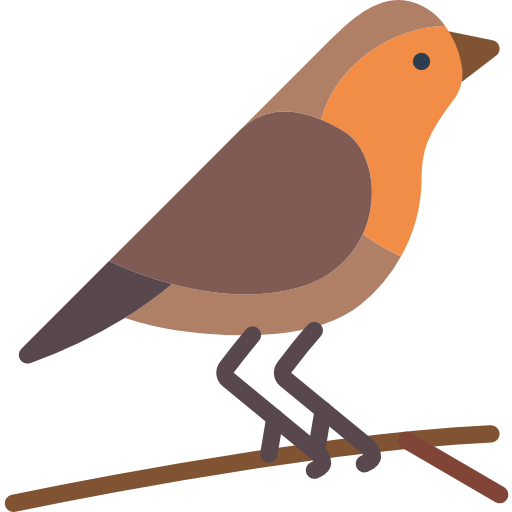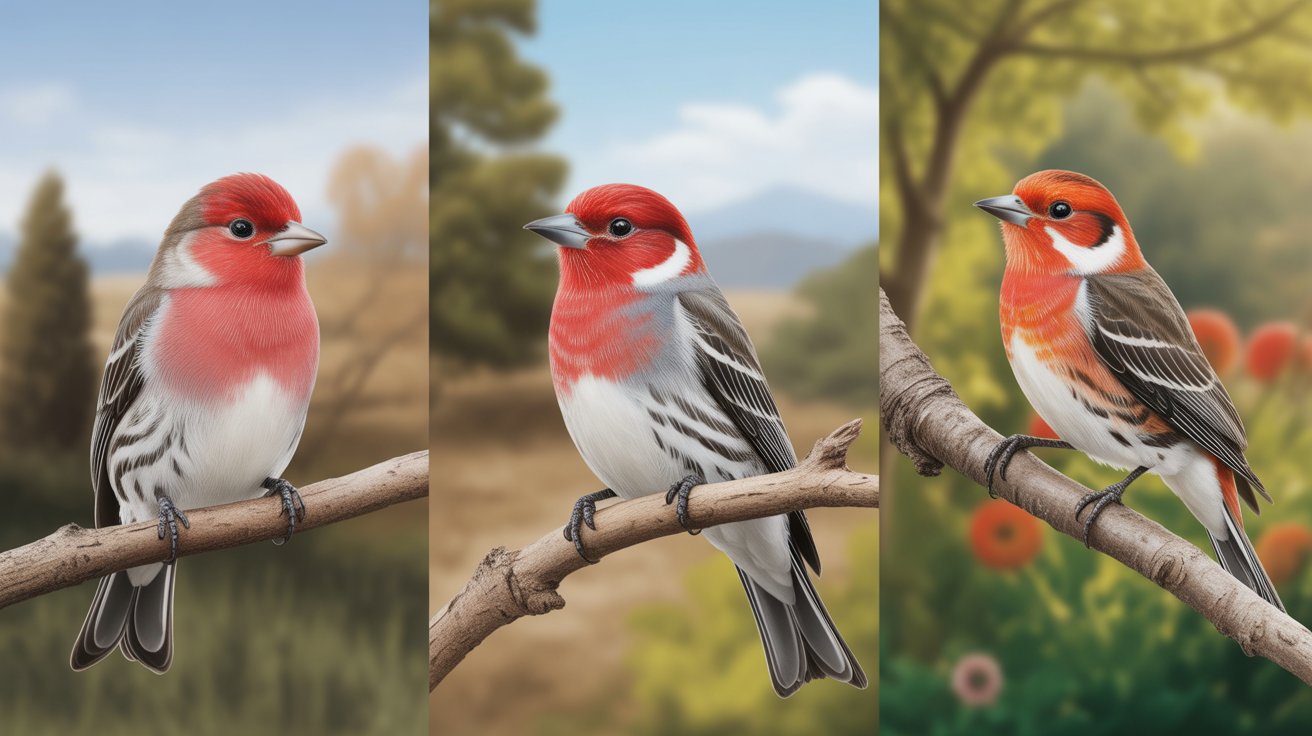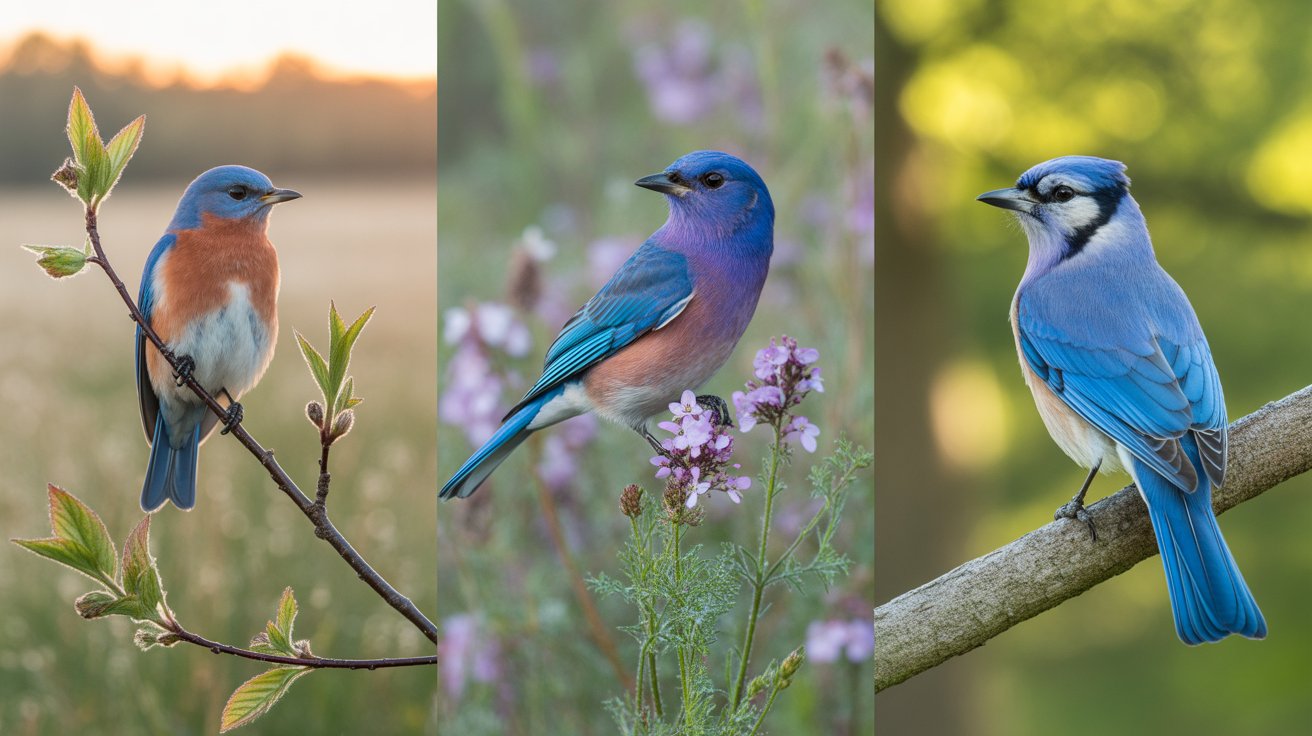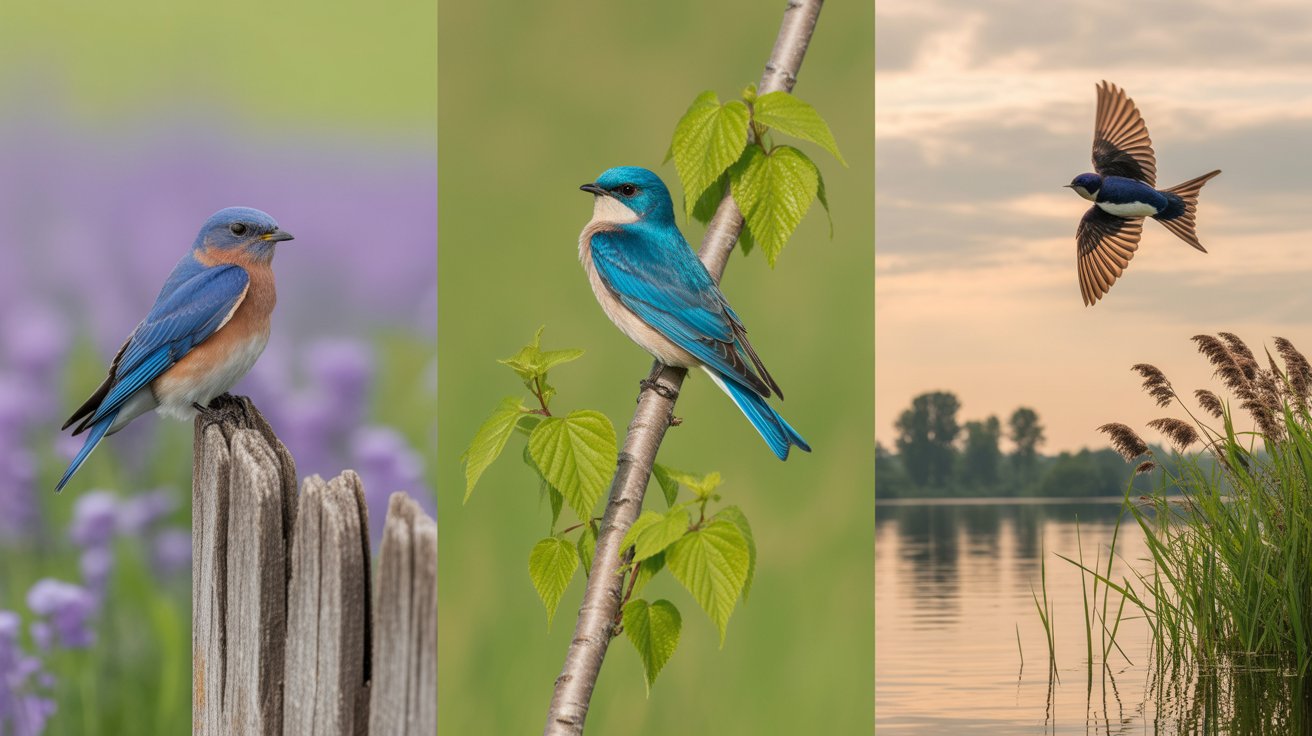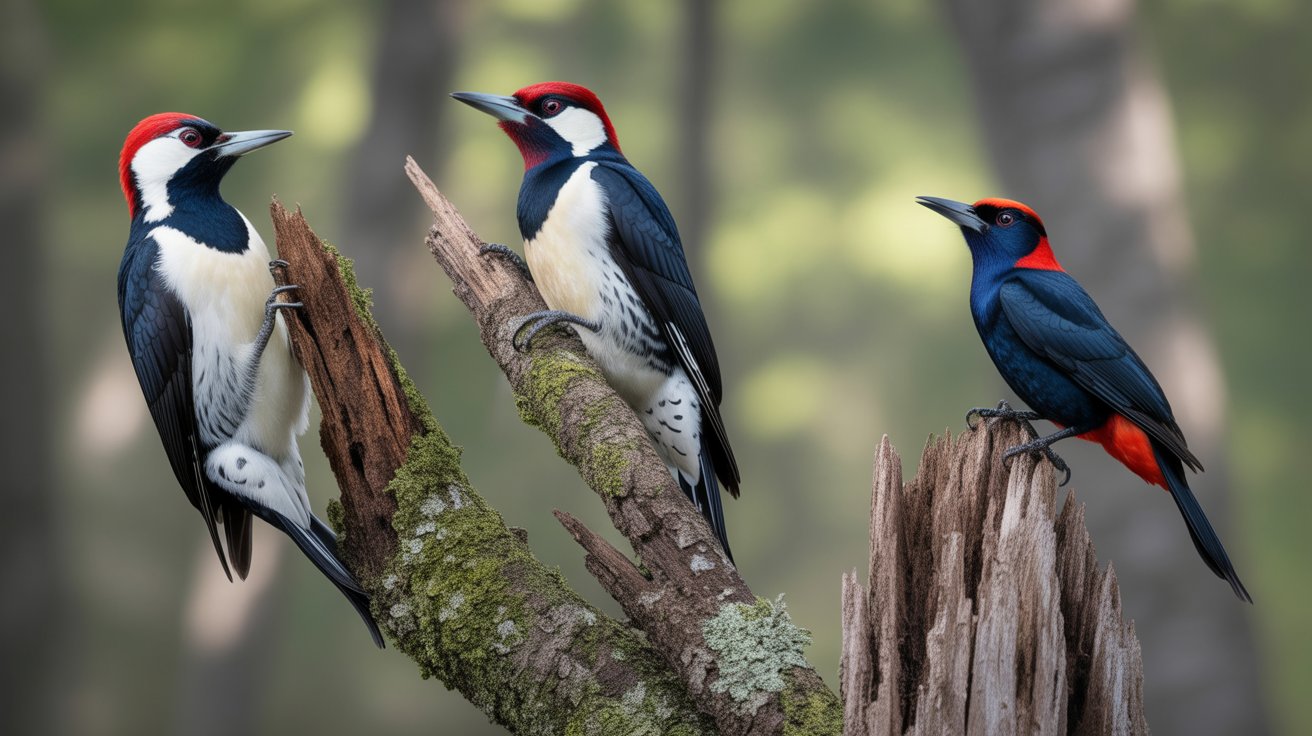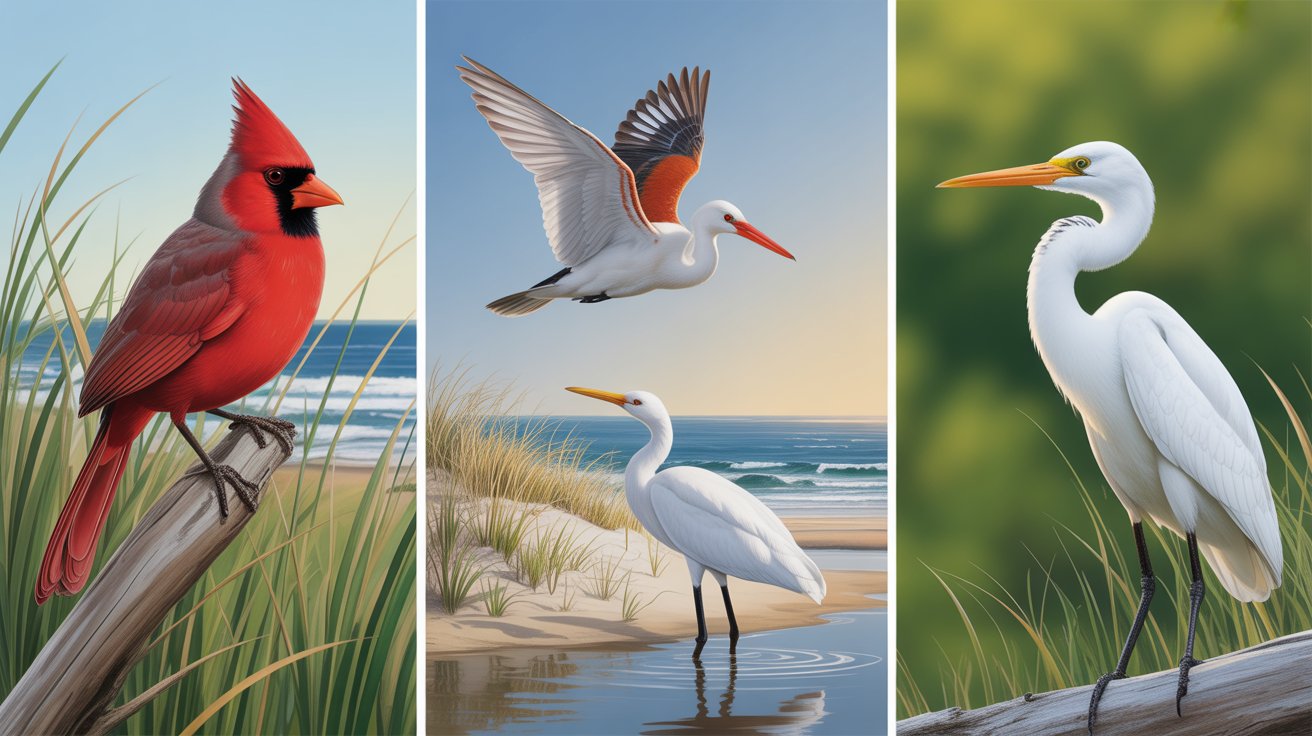Have you ever caught a glimpse of a tiny bird with a striking red head and felt instantly curious about what species it might be? You’re not alone.
Small birds with red heads are among the most eye-catching and charming birds you can spot in backyards, woodlands, or while birdwatching across North America and beyond.
Their bright plumage isn’t just beautiful—it often plays a role in courtship, territory defense, and camouflage in certain environments.
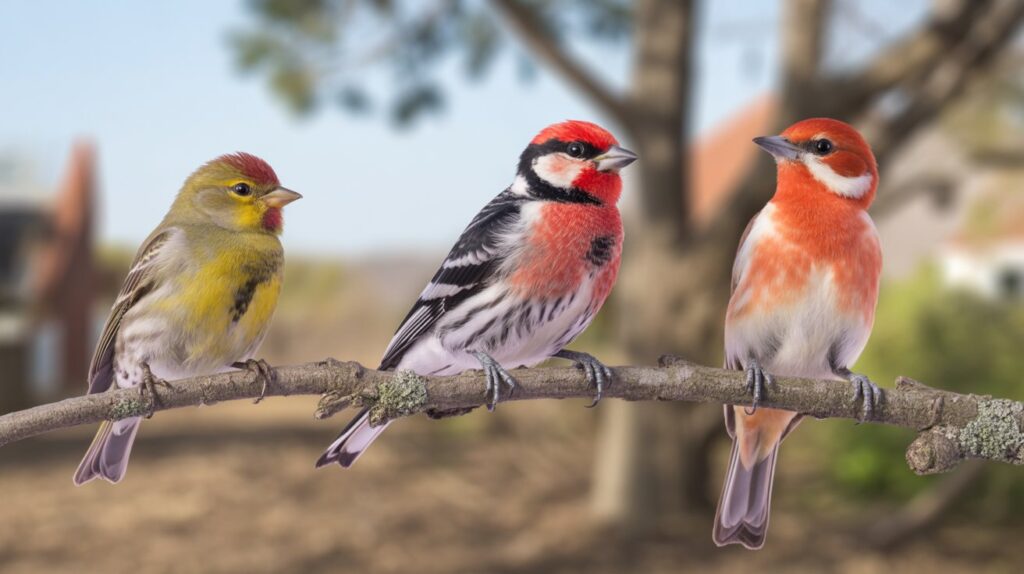
In this guide, you’ll explore more than 15 small birds that boast vibrant red crowns, caps, or entire heads. Whether you’re trying to identify a bird visiting your feeder or planning your next birdwatching adventure, this list has you covered. We’ll describe each bird’s appearance in detail, including their size, behavior, preferred habitat, and key identification tips. Plus, we’ll give you essential facts like scientific names, wingspans, and more to help you become an expert spotter.
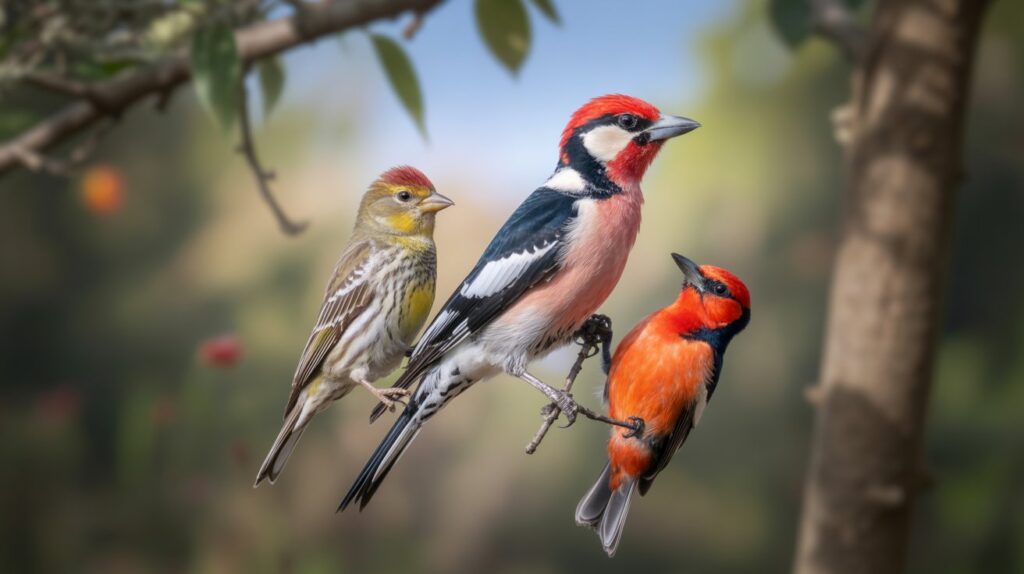
This isn’t just a list—it’s your go-to resource for learning about some of the most colorful and fascinating small birds in the wild. From fiery finches to crimson-capped woodpeckers, get ready to meet some truly stunning feathered friends.
Contents
- 1. House Finch
- 2. Purple Finch
- 3. Northern Cardinal
- 4. Red-headed Woodpecker
- 5. Scarlet Tanager
- 6. Western Tanager
- 7. Summer Tanager
- 8. Red-bellied Woodpecker
- 10. Red-breasted Sapsucker
- 11. Red-faced Warbler
- 12. Red Crossbill
- 13. Pine Grosbeak
- 14. Redpolls (Common & Hoary)
- 15. American Goldfinch (Breeding Plumage)
- 16. Red-crowned Parakeet
- FAQs
- Conclusion
1. House Finch
The House Finch is one of the most familiar small birds with a red head, especially across the U.S. Males sport a bright red crown, throat, and chest that contrast with brown streaky bodies. Females, on the other hand, are more subtly colored with gray and brown streaks but lack the red hue.
This adaptable bird thrives in both urban and rural areas, often spotted at backyard feeders or perched on wires.
Quick Facts:
- Scientific Name: Haemorhous mexicanus
- Wingspan: 8–10 inches
- Length: 5–6 inches
- Weight: 16–27 grams
- Habitat: Urban parks, gardens, deserts, farmlands
- Diet: Seeds, fruits, buds
House Finches are social birds, often gathering in flocks. Their cheerful, warbling songs and preference for human habitats make them a favorite among backyard birders.
2. Purple Finch
Despite its name, the Purple Finch actually appears more raspberry-red than purple. Males are covered in a rich rosy-red wash across the head, chest, and back, while females are brown with bold facial markings and no red coloring.
You’re more likely to find them in coniferous forests, but they also visit feeders in the winter months.
Quick Facts:
- Scientific Name: Haemorhous purpureus
- Wingspan: 8.5–10.2 inches
- Length: 4.7–6.3 inches
- Weight: 18–32 grams
- Habitat: Coniferous and mixed forests
- Diet: Seeds, berries, insects
Purple Finches have a sweet, rich song and are often mistaken for House Finches, but their color is darker and their bodies stockier.
3. Northern Cardinal
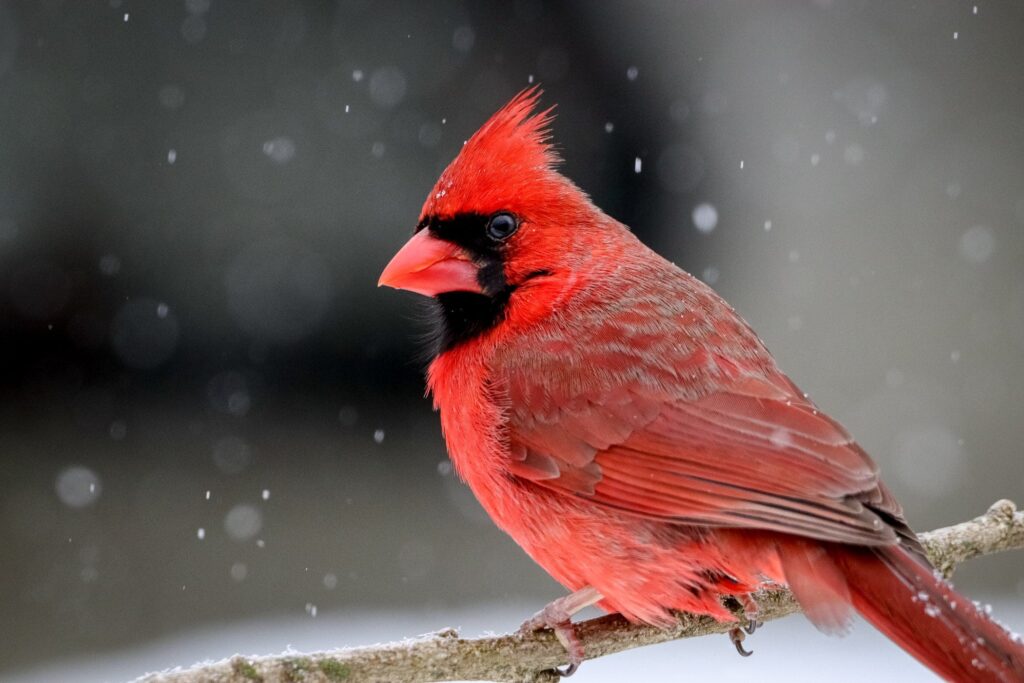
One of the most iconic red-headed birds, the Northern Cardinal is unmistakable. Males are bright crimson all over, including their heads, while females are more subtle with warm brown tones and red highlights.
Their strong crest and bright orange beak are easy giveaways.
Quick Facts:
- Scientific Name: Cardinalis cardinalis
- Wingspan: 9.8–12.2 inches
- Length: 8.3–9.1 inches
- Weight: 33–65 grams
- Habitat: Forest edges, gardens, shrublands
- Diet: Seeds, fruits, insects
These songbirds are not shy—males sing loudly to defend their territory, and both sexes are common visitors to feeders year-round.
4. Red-headed Woodpecker
This bird is a true standout. Its entirely crimson-red head contrasts with a snow-white body and black back, making it look almost painted.
Red-headed Woodpeckers are excellent flyers and often catch insects in midair, unlike many woodpeckers that only peck bark.
Quick Facts:
- Scientific Name: Melanerpes erythrocephalus
- Wingspan: 16.5 inches
- Length: 7.5–9.1 inches
- Weight: 56–91 grams
- Habitat: Open woodlands, orchards, groves
- Diet: Insects, nuts, seeds, fruits
These birds are known for storing food in tree crevices and returning to it later, a rare behavior among woodpeckers.
5. Scarlet Tanager
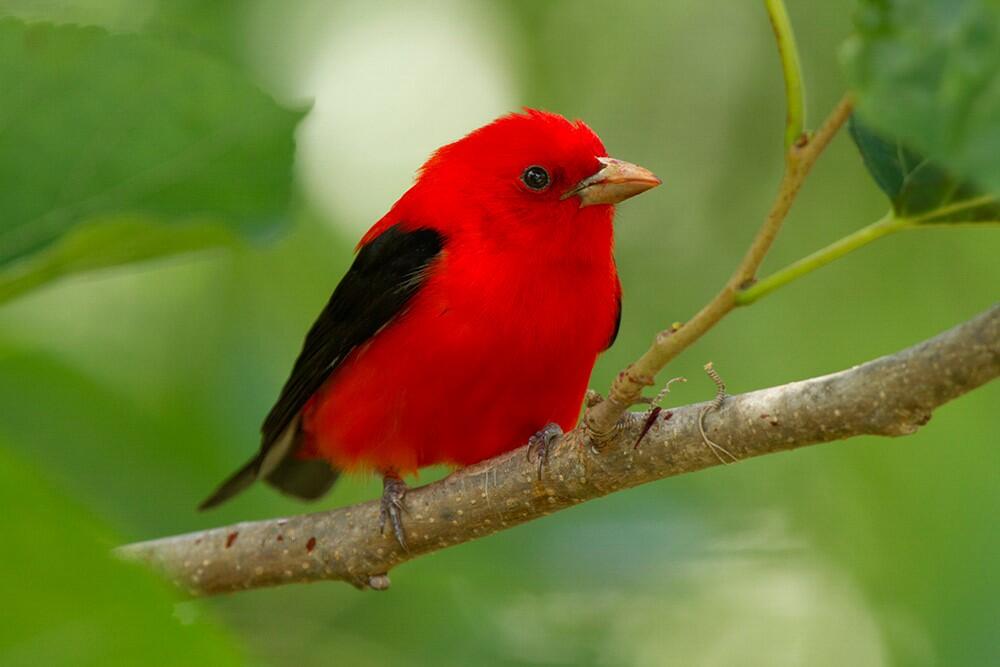
With a blazing red body and jet-black wings and tail, the Scarlet Tanager is breathtaking. The males display vivid red plumage in spring and summer, while females wear yellowish-green tones.
They’re most commonly found high in the forest canopy, making sightings extra rewarding.
Quick Facts:
- Scientific Name: Piranga olivacea
- Wingspan: 9.8–11.4 inches
- Length: 6.3–6.7 inches
- Weight: 23–38 grams
- Habitat: Deciduous forests, especially mature ones
- Diet: Insects, fruits
Though their color is vivid, their secretive nature and preference for treetops can make them tricky to spot.
6. Western Tanager
Western Tanagers are a striking blend of colors. Males have a red-orange head, yellow body, and black wings—a true spectacle in the forest.
The red on their heads comes from a pigment called rhodoxanthin, which they get from their insect diet.
Quick Facts:
- Scientific Name: Piranga ludoviciana
- Wingspan: 11.5 inches
- Length: 6.3–7.5 inches
- Weight: 24–36 grams
- Habitat: Coniferous forests
- Diet: Insects, fruits, berries
They migrate long distances and are usually spotted during the breeding season in western North America.
7. Summer Tanager
The Summer Tanager is the only entirely red bird in North America. Males are uniformly red, while females are golden-yellow.
Their preferred habitat is open woodlands, especially those with oak trees.
Quick Facts:
- Scientific Name: Piranga rubra
- Wingspan: 11–12 inches
- Length: 6.7 inches
- Weight: 29 grams
- Habitat: Open woodlands, riverbanks, groves
- Diet: Wasps, bees, insects, berries
They’re known for catching bees mid-flight and rubbing them on branches to remove the stinger before eating.
8. Red-bellied Woodpecker
Despite its name, this bird has a bright red crown and nape, which often causes confusion. The “red belly” is actually faint.
Males have more extensive red on the head, while females display red only on the nape.
Quick Facts:
- Scientific Name: Melanerpes carolinus
- Wingspan: 13–16.5 inches
- Length: 9.4 inches
- Weight: 56–91 grams
- Habitat: Woodlands, suburban yards, parks
- Diet: Insects, nuts, fruits
They’re often heard before seen, thanks to their loud calls and rapid drumming.
9. Downy Woodpecker
The Downy Woodpecker is the smallest woodpecker in North America and features a distinct red patch on the back of the male’s head. Females lack the red marking but still share the black-and-white spotted appearance.
These agile birds are often seen climbing tree trunks and branches, tapping as they search for insects.
Quick Facts:
- Scientific Name: Picoides pubescens
- Wingspan: 9.8–11.8 inches
- Length: 5.5–6.7 inches
- Weight: 21–28 grams
- Habitat: Forests, suburban yards, orchards
- Diet: Insects, seeds, berries
Their gentle drumming and high-pitched “pik” calls make them easy to locate even before you see them.
10. Red-breasted Sapsucker
This medium-sized sapsucker wears a fiery red crown and breast, blending into black wings and a white belly. Their bold color pattern and tree-sap drilling behavior make them stand out.
You’ll often see neat rows of sap wells in trees—evidence of their feeding.
Quick Facts:
- Scientific Name: Sphyrapicus ruber
- Wingspan: 14.6–16 inches
- Length: 7.9–8.7 inches
- Weight: 53–63 grams
- Habitat: Coniferous forests of the Pacific Coast
- Diet: Tree sap, insects, fruits
They are less vocal than other woodpeckers, but you may hear slow drumming or soft chirps during feeding.
11. Red-faced Warbler
This small warbler has a striking appearance—its bright red face contrasts sharply with a gray body and black cap. It’s one of the most vibrantly colored warblers found in North America.
Spotting one is a treat due to their limited range and secretive behavior.
Quick Facts:
- Scientific Name: Cardellina rubrifrons
- Wingspan: 7.5 inches
- Length: 5.5 inches
- Weight: 9 grams
- Habitat: High-elevation pine and fir forests
- Diet: Insects and larvae
They flit quickly among branches and emit a sweet, high-pitched song, often heard more easily than seen.
12. Red Crossbill
Named for their uniquely crossed bills designed to extract seeds from conifer cones, Red Crossbills often display a reddish head and body. Males range from orange to deep red, while females are more olive.
Their calls often give them away before you see them.
Quick Facts:
- Scientific Name: Loxia curvirostra
- Wingspan: 10.5–11 inches
- Length: 5.5–6.5 inches
- Weight: 26–39 grams
- Habitat: Coniferous forests
- Diet: Pine, spruce, and hemlock seeds
They’re nomadic, moving where conifer crops are abundant, and are often found in flocks.
13. Pine Grosbeak
Pine Grosbeaks are gentle giants among small birds, with males showcasing soft red heads and upper bodies. Females sport yellowish or gray tones with hints of orange.
They move slowly and often feed quietly on tree buds and berries.
Quick Facts:
- Scientific Name: Pinicola enucleator
- Wingspan: 13 inches
- Length: 7.9–9.8 inches
- Weight: 52–78 grams
- Habitat: Boreal forests, mountainous regions
- Diet: Buds, seeds, fruits, insects
Their mellow whistles and calm behavior make them a peaceful presence in colder regions.
14. Redpolls (Common & Hoary)
Redpolls are tiny, energetic birds that wear a distinctive red patch on the crown. Both Common and Hoary Redpolls have similar appearances but differ slightly in plumage and geography.
They’re often seen in winter, flitting in flocks through snowy trees or visiting feeders.
Quick Facts:
- Scientific Name: Acanthis flammea (Common Redpoll)
- Wingspan: 7.5–8.7 inches
- Length: 4.7–5.5 inches
- Weight: 11–20 grams
- Habitat: Arctic tundra, northern forests
- Diet: Seeds, especially birch and alder
They’re incredibly cold-hardy, often sleeping in snow tunnels to conserve heat.
15. American Goldfinch (Breeding Plumage)
Though mostly known for its brilliant yellow, the American Goldfinch can show orange-red tinges on its head during breeding season, particularly in males.
Their vivid coloration and bouncy flight make them a joy to watch.
Quick Facts:
- Scientific Name: Spinus tristis
- Wingspan: 7.5–8.7 inches
- Length: 4.3–5.1 inches
- Weight: 11–20 grams
- Habitat: Meadows, gardens, roadside weeds
- Diet: Seeds from thistle, sunflower, dandelion
They’re common at feeders and sing a cheerful “per-chick-o-ree” flight call.
16. Red-crowned Parakeet
This vibrant bird is native to New Zealand and known for its bold red crown that contrasts with a bright green body. Also called the Kākāriki, it’s popular in aviculture due to its vivid plumage.
Though not native to North America, it’s a small red-headed bird worth knowing.
Quick Facts:
- Scientific Name: Cyanoramphus novaezelandiae
- Wingspan: ~11 inches
- Length: 9–10 inches
- Weight: 50–80 grams
- Habitat: Forests, scrublands
- Diet: Seeds, fruits, flowers, insects
They’re fast flyers and communicate through sharp, piercing calls.
FAQs
1. What small bird has a bright red head and brown body?
You’re likely spotting a House Finch. Males have red on their heads and chest with streaky brown bodies.
2. Are all birds with red heads male?
Not always. In some species like Northern Cardinals and House Finches, only males are red, but in others, both sexes may have red markings.
3. Why do birds have red heads?
Red plumage often plays a role in attracting mates, signaling health, or deterring rivals.
4. Do red-headed birds migrate?
Some, like the Scarlet Tanager and Western Tanager, do migrate, while others like House Finches are year-round residents.
5. Can I attract red-headed birds to my backyard?
Yes! Use feeders with black oil sunflower seeds, offer fruits, and plant native shrubs to provide food and shelter.
Conclusion
Small birds with red heads are a delightful sight and a favorite among birdwatchers and backyard enthusiasts. Whether you’re spotting a House Finch at your feeder or catching a glimpse of a Scarlet Tanager in the treetops, these birds bring a vibrant burst of color to the natural world. With their distinct markings, melodic songs, and fascinating behaviors, they’re more than just pretty faces—they’re essential parts of the ecosystem.
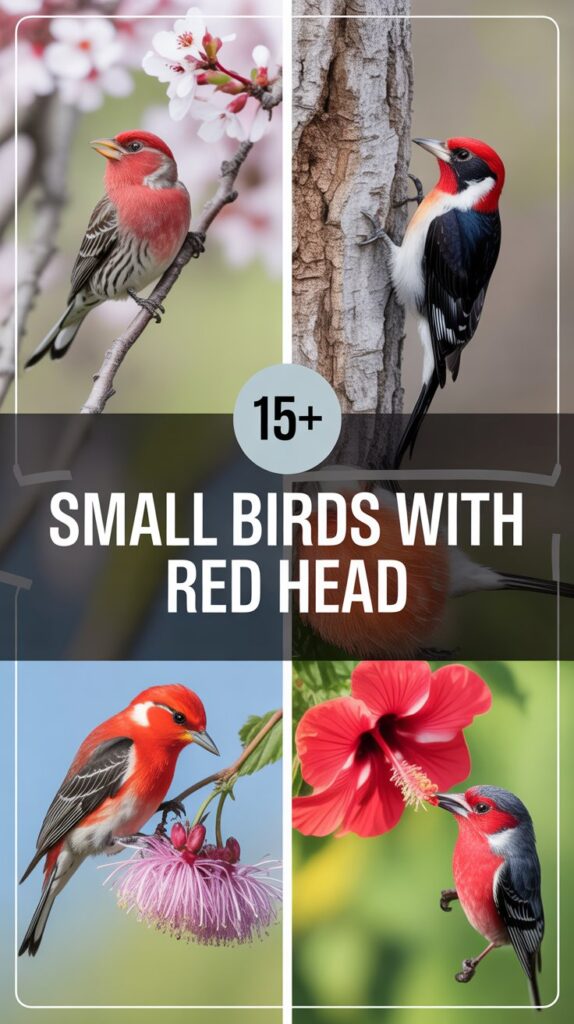
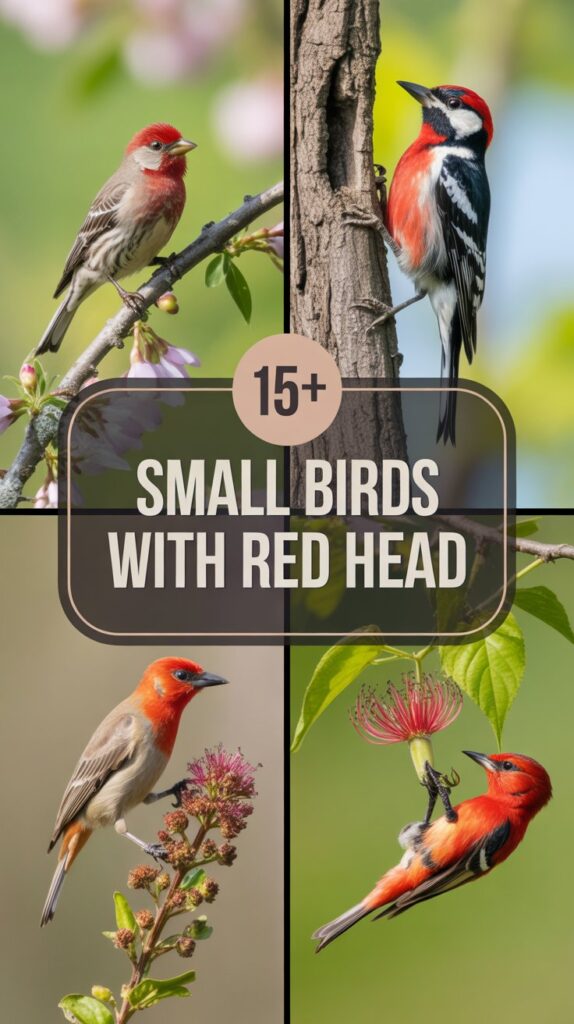
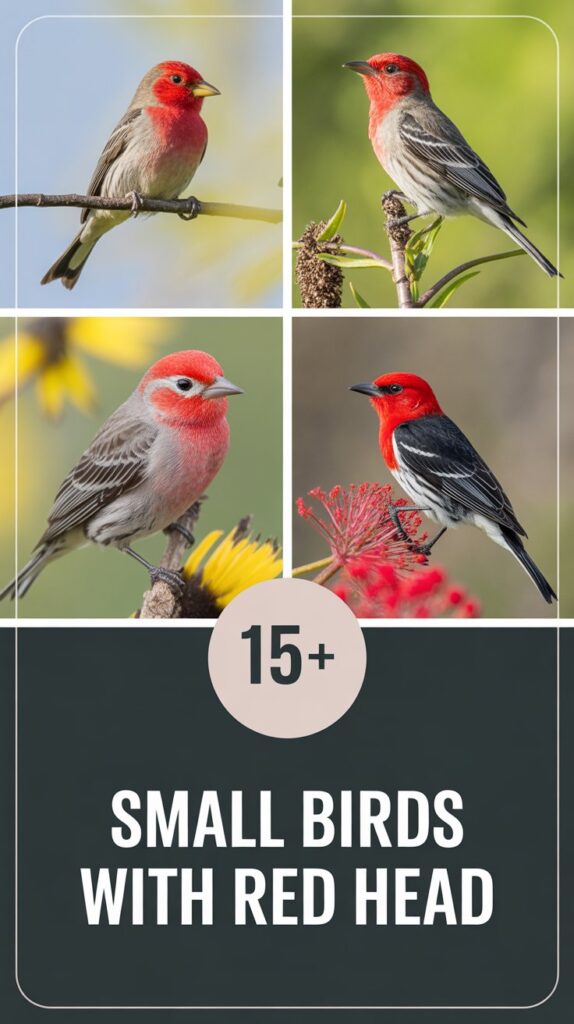
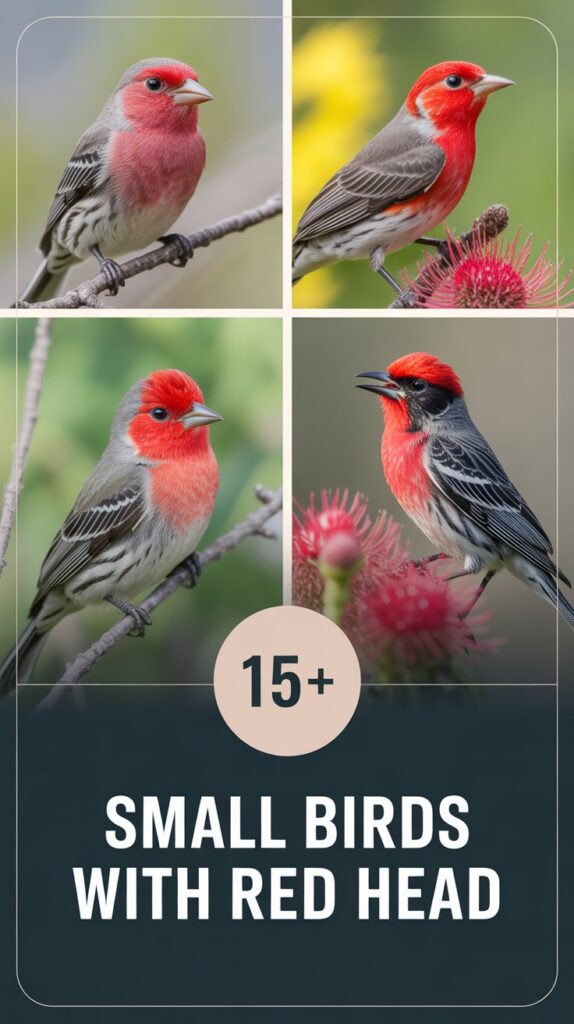
As you explore this list, you’ll start recognizing these species more easily and understanding their unique roles in the avian world. From urban parks to quiet forests, keep your eyes open—you never know when a flash of red will catch your attention.
